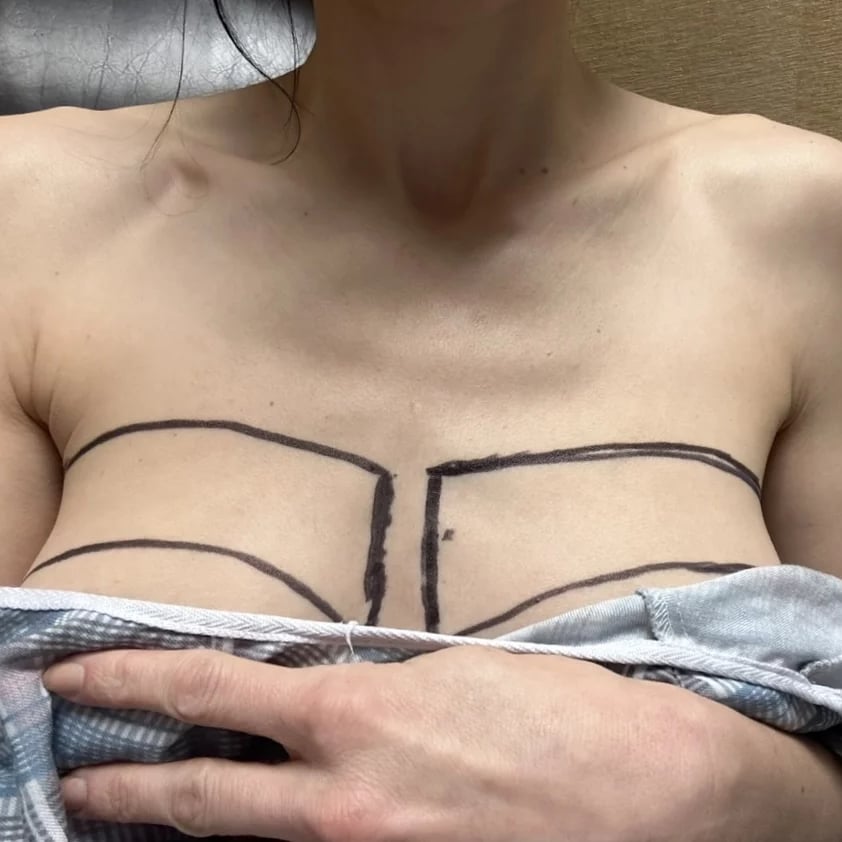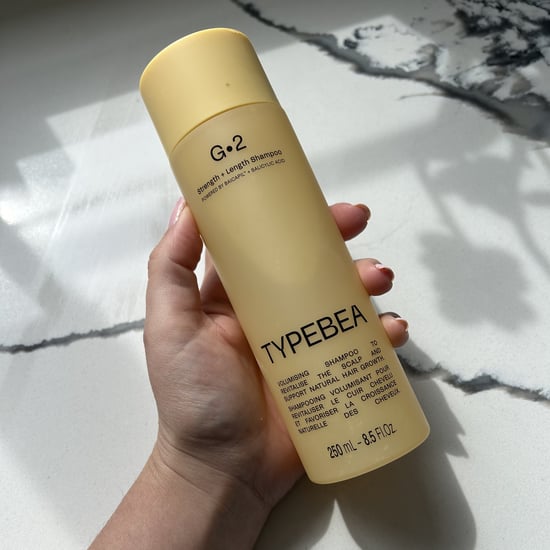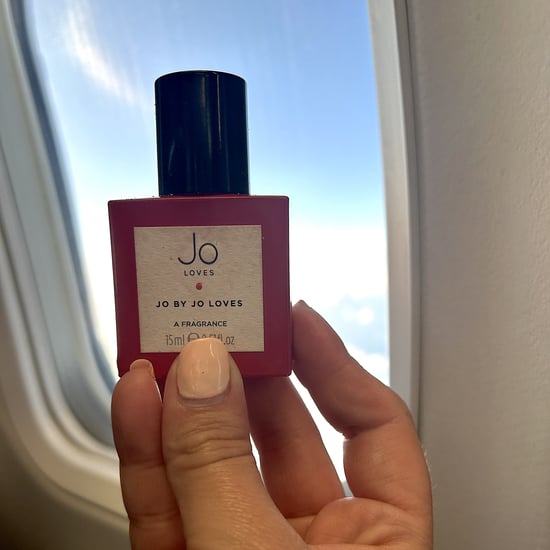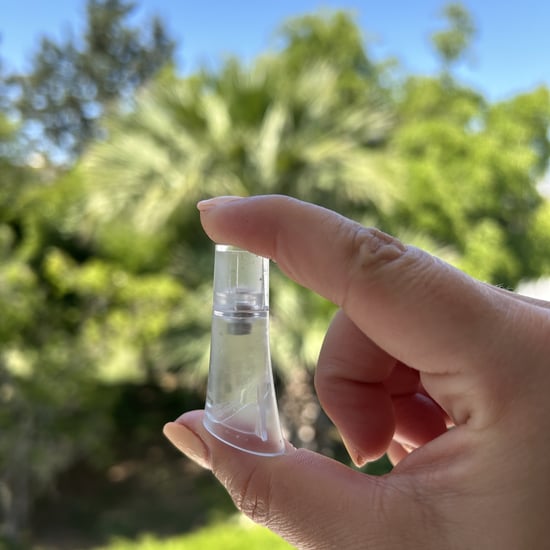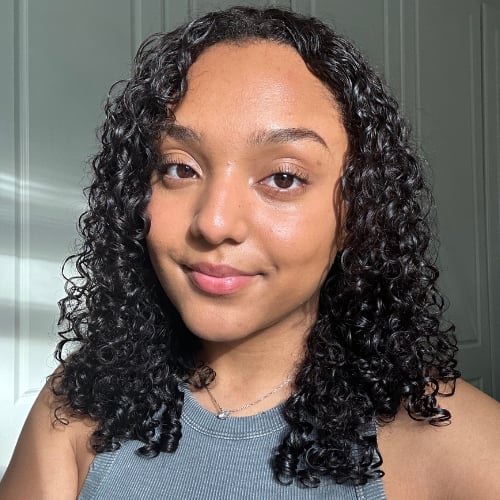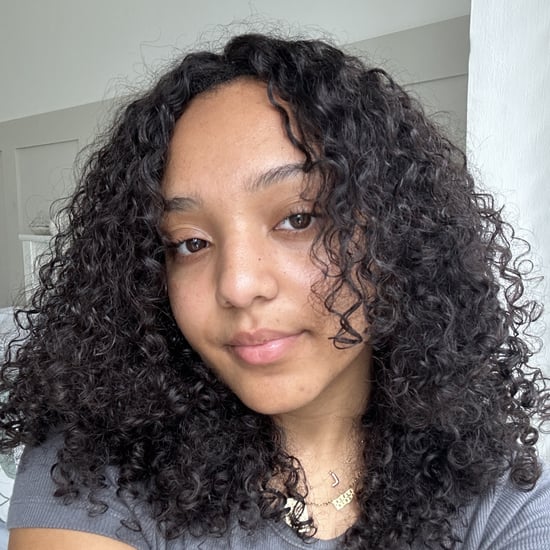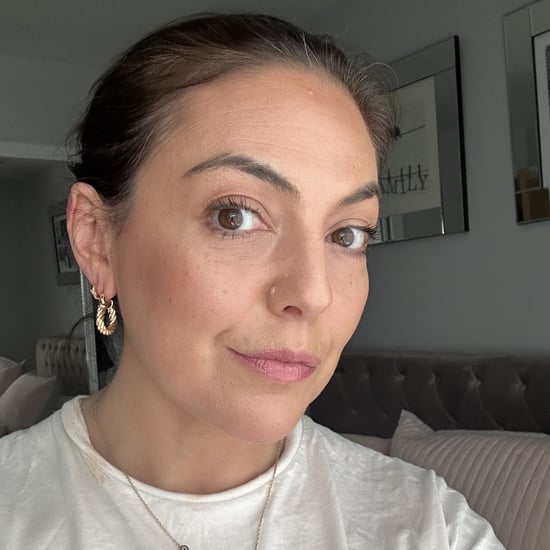I Got a "Fat Vampire" Breast Augmentation
I Got a "Fat Vampire" Breast Augmentation, a Natural Alternative to the Boob Job
As POPSUGAR editors, we independently select and write about stuff we love and think you'll like too. If you buy a product we have recommended, we may receive affiliate commission, which in turn supports our work.
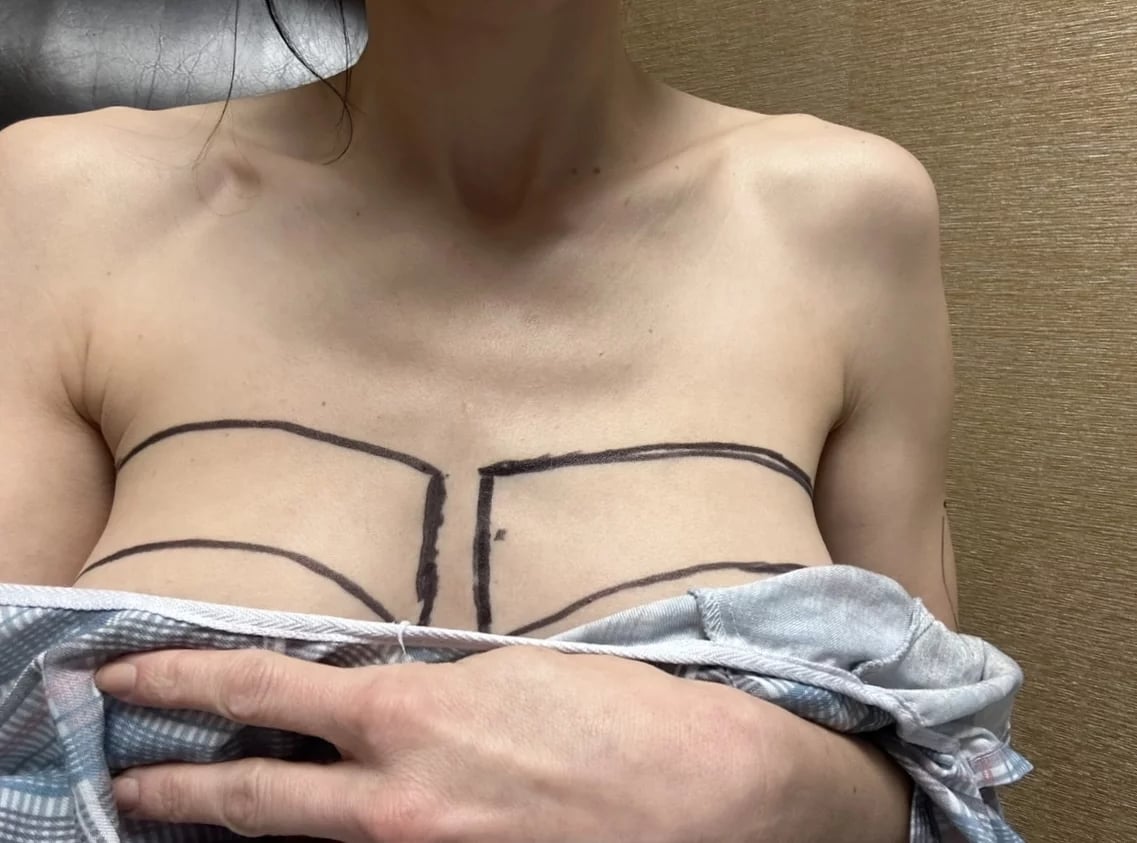
Since Alix Earle celebrated the "boobaversary" of her breast augmentation earlier this year, breast implants have been trending among Gen Z-ers on TikTok. As someone from an older age cohort, my concerns differ when it comes to boob-related aesthetics. Thoughts of surgery erred more toward lifting as opposed to volumising, and I assumed I would get a breast lift in my 40s to address sagging. In my 20s, my doctor had me adopt an anti-inflammatory diet to manage an autoimmune condition. After eliminating gluten and dairy from my already vegetarian diet, my health flourished — but my breasts shrank. Still, I liked how they looked and was unconcerned for years.
By my 30s, the volume loss in my breasts became more pronounced as everything shifted downward, thanks in part to gravity but also the decline in skin elasticity with age. Board-certified plastic surgeon Robert Cohen, MD, explained to me that because of their decrease in size, my breast skin was extra "stretchy" and would be more prone to sagging. I was happy with the shape at the bottom, but missed the corresponding fullness they once had at the top. Even a hint of cleavage was a distant memory.
I knew implants were not a good option for my aesthetic preferences, and Dr. Cohen pointed out that they would make any sagging worse for me. More importantly, my past history of autoimmune disease and the genetic MTHFR mutation are two major risk factors for developing breast implant illness (BII). So, I began researching alternatives.
On the less-invasive end of the spectrum, there's the "vampire breast lift," which injects regenerative platelet-rich plasma (PRP) for mild re-shaping and added collagen. Then, there are fat transfers that are considered the gold standard when it comes to natural breast augmentation. The latter are also subtle, adding anywhere from half-a-cup to a full cup size to the breasts per surgery, and last forever, whereas implants must be replaced.
"Fat transfer is not new, it's been around 40 or 50 years," says board-certified plastic surgeon Amir Karam, MD, who frequently performs fat transfers to the face. "What's interesting about it is that it is now the ultimate volume replacement method because it's natural and it's permanent. There haven't been enough surgeons that have really made it part of their practice." He adds that because it is literally your own fat (not a foreign body like an implant), it does not risk rejection or triggering an autoimmune response.
My most-trusted aesthetics expert, double board-certified plastic surgeon Ben Talei, MD, recommended I set up a consultation with the Beverly Hills-based, board-certified plastic surgeon Ritu Chopra, MD, who frequently performs fat transfers to the face and body, with expertise in the breasts. As a leading expert in BII, he also performs explant surgeries (i.e., the removal of implants) and breast reconstruction using fat transfer regularly. Together with board-certified plastic surgeon Nathaniel Villanueva, MD, they combine the best of both worlds: fat transfer breast augmentations with PRP — a.k.a. the "fat vampire" breast augmentation.
What Is the Fat Vampire Breast Augmentation?
The procedure begins with liposuction in order to harvest the fat from the body. The most popular areas for fat retrieval are the abdomen, flanks (i.e., love handles/back), thighs, and arms. Then, Dr. Chopra purifies the fat, combines it with PRP, and meticulously injects it into the breasts.
"The ideal patient for the fat vampire is one that doesn't want a foreign body in their bodies [and/or] has an autoimmune disease, but still wants a breast enhancement," Dr. Chopra says. "That patient requires an alternative to breast implants, and fat grafting is probably the best option to do that." The one caveat, he says, is that you have to have sufficient fat pockets for them to harvest and transfer. "You are going to lose 30 to 40 percent of the fat that we transfer, so we need to make sure there is enough fat to make surgery worthwhile."
This is where Dr. Villanueva comes in. "I use power-assisted liposuction in a three-step process [to] separate the fat from the surrounding tissues, remove the fat, and then smooth everything out, leaving behind a consistent and thin layer of fat," he says, which ensures that the final outcome is smooth. While each procedure is anatomy-dependent, they aim to harvest roughly 150 - 200 cc's of fat, which is put into a canister.
Next, Dr. Chopra purifies the extracted fat and combines it with PRP that has been created by spinning the patient's blood in a centrifuge to separate out the densest particles of growth factors and cytokines found in blood platelets. "The PRP provides growth factors and cytokines to help the fat take and survive in the new region it is transferred to," says Dr. Villanueva. By communicating with the transferred fat's stem cells, it also "helps the fat to integrate into the surrounding tissues." (This process is substantiated by studies cited in Peptide Protocols: Volume One, which states that "PRP can improve the outcome of autologous fat transplantation.") Of course, PRP is also known to benefit the skin's elasticity and texture by stimulating collagen and elastin production, reducing inflammation at the injection site and promoting healing.
The healing process starts with more volume than you want due to swelling and the final result inevitably means some fat does not take and is flushed out of the body. "After about two to three months, the fat that is still there will last forever," Dr. Chopra says. "The beauty of the procedure is that if you gain weight, you will gain fat all over — including your breasts." This means that the fat cells will remain there permanently, and whether or not you cause them to grow by gaining weight, or to shrink by losing weight, is all lifestyle-dependent.
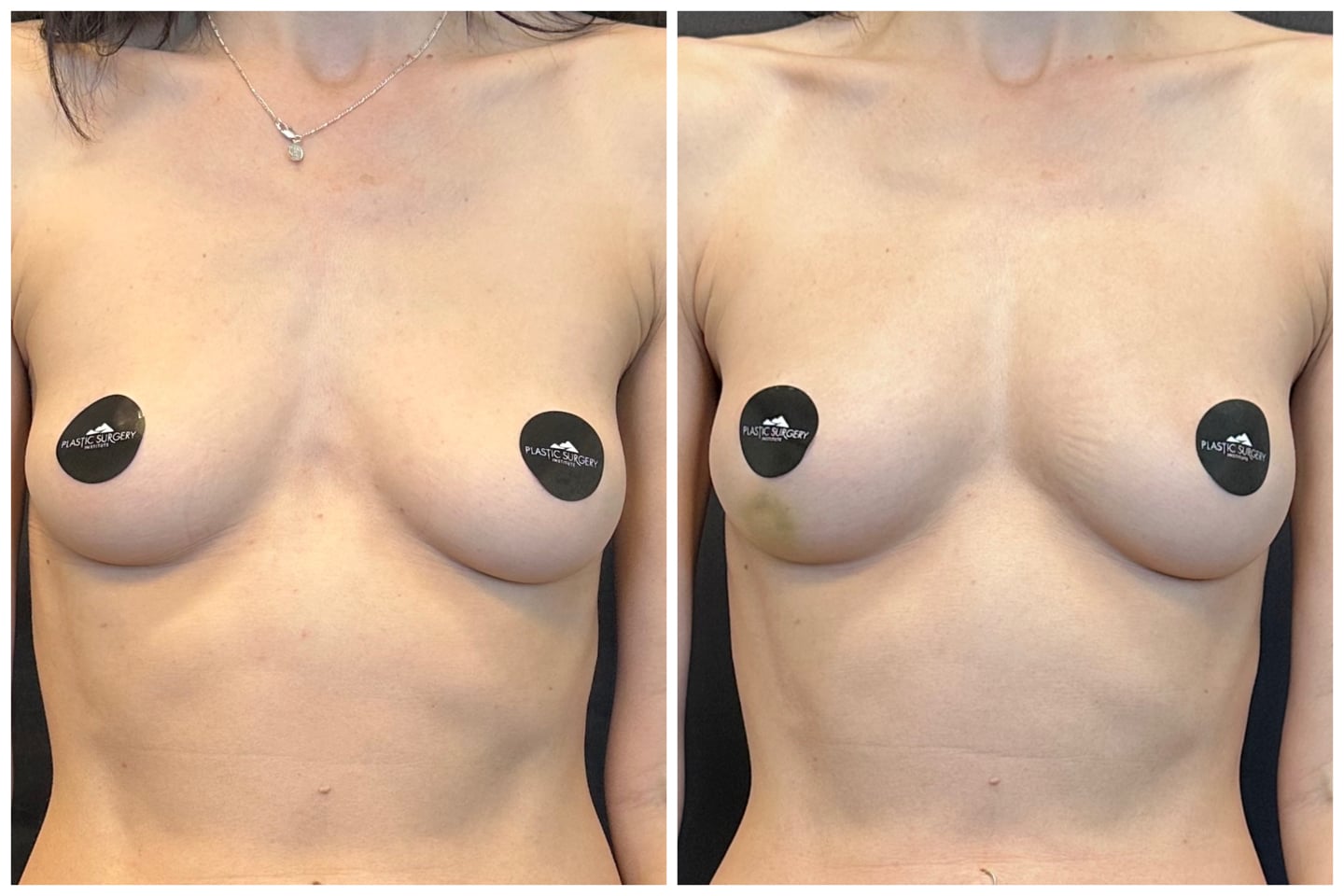
My Fat Vampire Experience
Consultation
The first step was to set up a consultation. During my physical examination, I was told that I would need to gain roughly five pounds of weight for the surgery. Once I accomplished that, they would take fat from my inner and outer thighs, flanks, and arms. They estimated that my surgery would take roughly three hours and that I would heal over the course of the following month, wearing a compression garment for the duration of the healing process. Keeping weight on after the surgery would also be important to help the fat take and to maintain the size of my results.
As for the price, well, there is something in the beauty industry we think of as the "Beverly Hills markup." Because the procedure takes two surgeons, and fat would have to be taken from so many parts of the body, the procedure was estimated to cost roughly $40,000. (Depending upon where you go and your fat supplies, prices have been cited in the $5,000 to $20,000 range when performed by a single surgeon.)
The Week Before Surgery
The week before surgery, I had pre-op bloodwork drawn for my anaesthesiologist. This ensured that I was healthy enough to go under anesthesia. A pharmacy filled my prescriptions, which would be waiting for me at the office after the surgery, and I obtained a negative COVID test.
Three days before, I started applying Viktor Michael Hidden Agenda Pre- and Post-Injection Care Serum to my breasts. It contains a potent blend of arnica montana, bromelain, and dragon's blood to help prevent and heal bruising. I also bought some pineapple to keep in the fridge for its bromelain and vitamin C, and stocked my pantry with Cure Hydrating Electrolyte Mix. Then I arranged for rides to and from my appointment.
The Day of Surgery
As with most surgeries, on the day of my procedure I could not drink water or eat for eight hours prior. I was so thirsty that it overwhelmed any nerves. Once I changed into the gown, had my vitals taken, and saw the O.R., things started to get real. A nurse took my vitals, I met the anaesthesiologist, and another set of "before" pictures were taken. Then Dr. Chopra and Dr. Villanueva came in to draw exactly where the the fat would be taken from and added to on my body. I started to feel some anxiety but felt reassured by the doctors and team; this is something they do every single day, and their friendliness and professionalism made me feel confident.
When I woke up from the surgery, my throat felt dry and sore, which they told me was due to being intubated. I felt wobbly and weak as I was helped out of the bed, and noticed that I had been dressed in compression garments covering my thighs, arms, and mid-section with a padded corset around my back and abs. I had also been dressed in my clothes — loose sweatpants, an oversized T, and zip-up shoes that I was helped into. I was wheeled in a wheelchair down to the valet with my friend, stating only, "I'm sleepy," to my inquiring bestie.
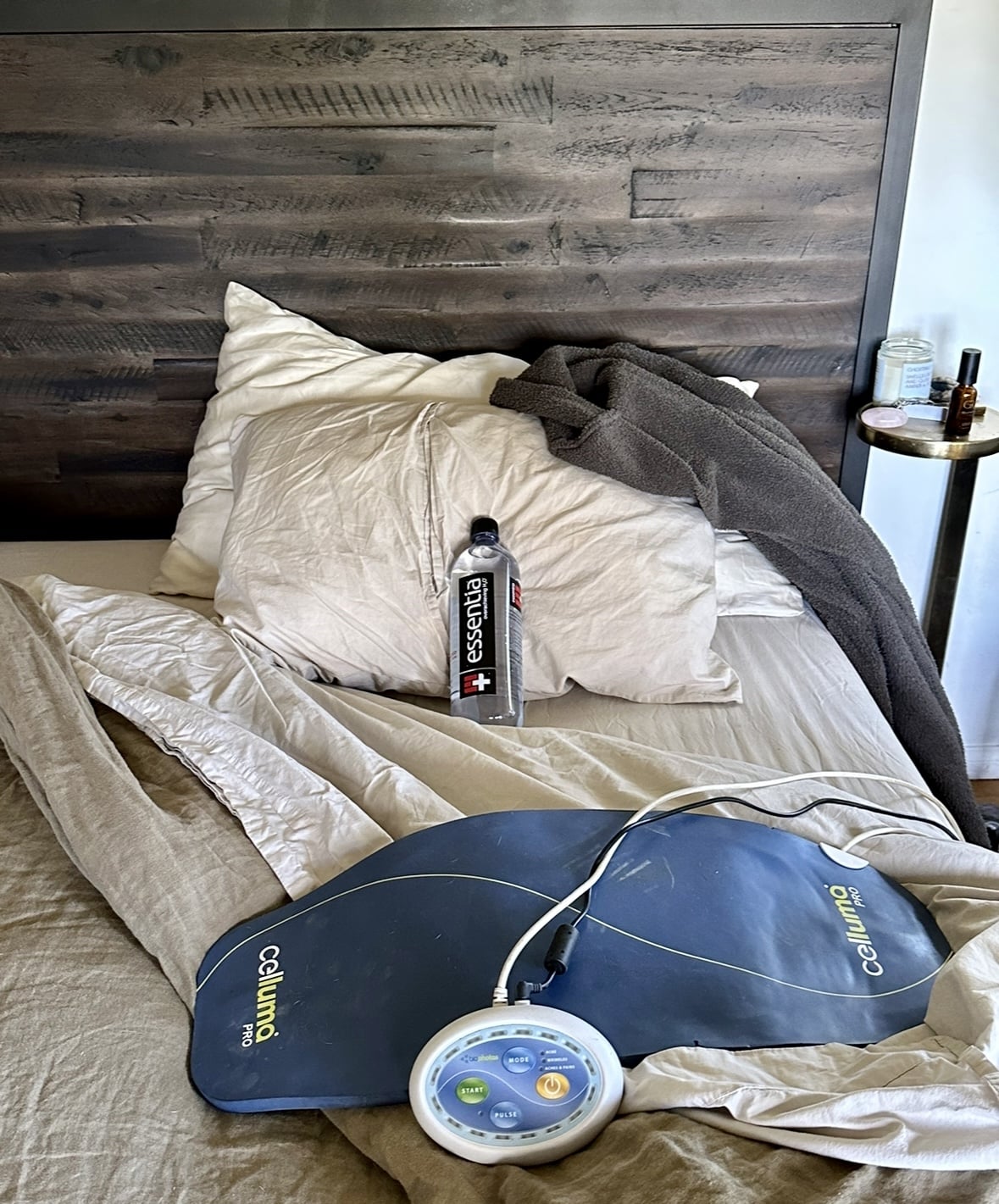
Recovery and Results: Day 1
From the moment I got home, I kept my Celluma PRO ($1,795) panel of red LED and infrared light draped over my chest on the 'Aches & Pains' setting (for the deepest penetration of the anti-inflammatory, healing light) as much as possible. I knew that bruises begin to form in the first 24 hours, so I started applying Skintensive Bruise and Scar Cream to prevent bruise proliferation using arnica and vitamin K. I actually applied my skin-care regimen before bed and had prepared by buying Koh Gen Do Cleansing Spa Water Wipes just in case I didn't feel like getting up.
I took my pain medication and fell asleep easily, but I was definitely sore that night when the swelling peaked. The discomfort was mostly on my back (which, it turns out, is where they took the bulk of my fat from) but my breasts also felt inflamed. Staying asleep was difficult due to the feeling of being squeezed by the padded compression garment, and I was constantly getting up to pee. (Never in my entire life have I gone to the bathroom so many times in a night.) Dr. Chopra explained that this was because a lot of fluid had been loosened up in my body due to the procedure. Throughout the night, I reached for ice packs to soothe my inflamed back and chest.
Recovery and Results: Day 2
The next day I was sore when I tried to move around, the way you feel the day after a hardcore workout. I had a headache and lingering sore throat that were more bothersome to me. That day I also had my first follow-up appointment with Dr. Chopra, who warned that the pain from lipo might get worse and recommended that I keep eating and walking around as much as possible. This was also when I saw the results for the first time; I knew the massive swelling would go down and loved the shape. He had actually corrected a slight asymmetry in the left breast in addition to adding fat to the top.
Bear in mind that my breasts were huge due to swelling, which is normal. You could see exactly where the fat had been injected due to redness in the top portion of my breasts and a small spot on the left breast injected for symmetry. Combined with the corset topped compression garment, the visual effect of the swelling created an optical illusion that made my breasts look even bigger and my friend proclaimed that I "looked like a Kardashian."
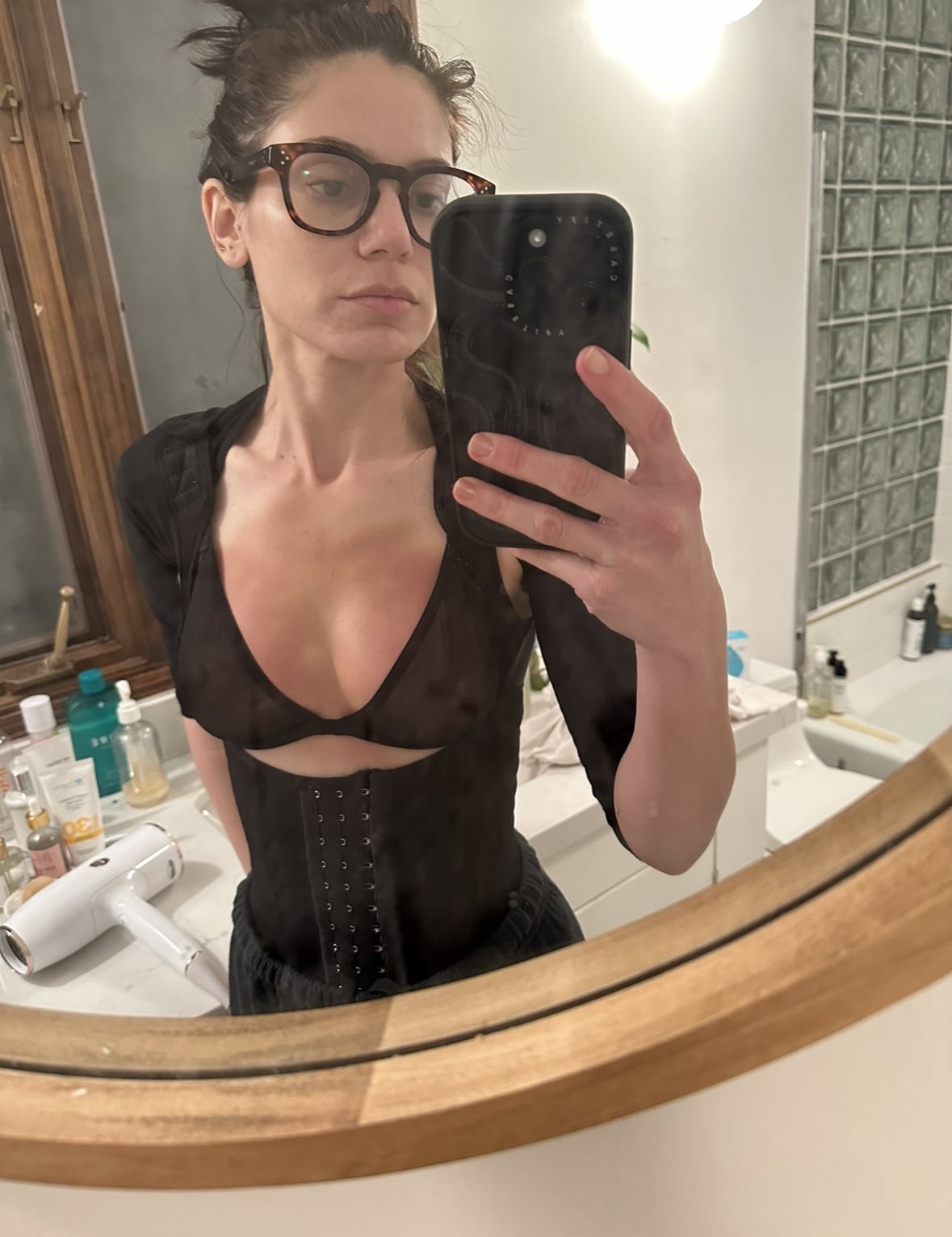
Recovery and Results: Day 3
By day three it was still difficult to move around, but getting up or sitting down was the only time I felt discomfort. For the first few days I would get up for a few hours, then take two-hour naps in the afternoon. I continued to use my LED panel constantly and to take my prescribed antibiotic four times per day, a mild painkiller three times per day, and my optional, heavy-duty painkiller at night to help me sleep (though I discontinued it after three or four days). I also took vitamin C tablets and juice shots, and found that I craved green juices.
Once my headache went away, the main discomfort I was experiencing actually had to do with "elimination." Though I had gone "number one" excessively on night one, I had not been able to go "number two" at all. Let me tell you: severe bloating and compression garments do not mix. This is a common post-surgical affliction from the anesthesia and painkillers. After five days of being backed up, my good friend recommended the Fleet Laxative Saline Enema, which was a lifesaver.
Recovery and Results: Day 4
I was allowed to take off my compression garment for two hours daily, but day four was the first day that I was allowed to shower. Dr. Chopra gave me an antimicrobial Spongellé SurgyClean sponge to use. This was the first time I saw my body under the compression garments and saw how intense the bruising was.
I was mostly concerned with keeping everything clean, particularly because home renovations are dusty. I began spritzing the small incisions from liposuction — two on my lower back, each arm, and each thigh — with Tower 28 S.O.S. Daily Rescue Facial Spray, an antimicrobial and pro-healing hypochlorous acid solution. After showering, I reached for the Resorè Body Towel, whose soft cotton contains an antimicrobial, silver ion-infused textile to ensure I kept the dot-like incisions and their sutures clean. I got in the habit of wearing cosy cashmere joggers over my compression garment and was pleased to see that I could still wear the same bra size as before — I just filled it out like I was a teenager again.
Recovery and Results: Day 5
My second follow-up appointment came on day five. Both doctors were thrilled with the results and my healing progress. We took some photos and they instructed me to keep wearing my compression garment for the next month, advising that I could pick out some alternatives when my current garments became too loose. SKIMS has compression garments that actually can pass for fashion, while Shapermint has more affordable options such as the Empetua Open Bust Boyshort Bodysuit, and the Ortonyx Abdominal Binder is super convenient.
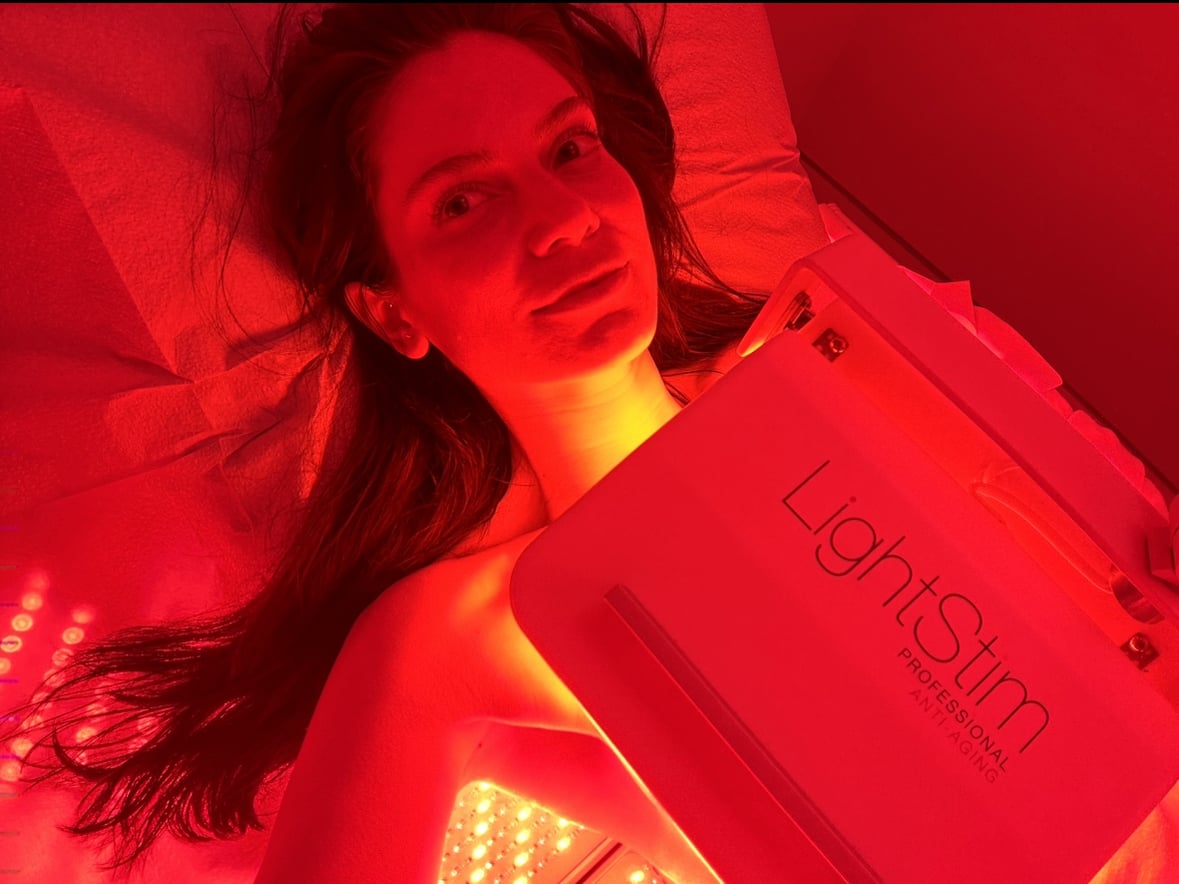
As the swelling decreased steadily, my bruising was healing into shades of yellow with spots of purple and blue. To promote healing, I went to the AuraSpa Healing Centre for a LightStim Red Light treatment session and a session of Hyperbaric Oxygen Therapy (HBOT). I saw integrative aesthetics expert Rahi Sarbaziha for a push of the powerful antioxidant glutathione and some vitamin C and picked up a bottle of her pro-healing Dr. Rahi Post Procedure Recovery Supplement for my bruising. I also consulted with Dr. Rahi and Manuel Lizarraga of You+Health to start a regimen of peptide therapy including BPC 157, a combination of 15 amino acids that accelerate wound healing and are anti-inflammatory in nature.
Recovery and Results: Day 10-14
My stitches started to come out at day 10. The incisions formed small scabs at the tops and backs of my inner thighs, behind my elbows, behind my shoulders, and at the bottom of my back, which started to itch like crazy. I began to apply an antioxidant serum that contains the precursor to clutathione, 111Skin Y Theorem Repair Serum NAC Y2 to promote healing.
I only felt tender on the backs of my arms and my lower back. Most of my bruising and swelling was gone, although my right arm and one of my thighs still had some yellowish remnants. When my constipation finally resolved — at which point I tightened my waist compression garment two entire notches — I began experiencing less back pain at night. This is also when I began to wear the SKIMS Sculpting Bodysuit Mid Thigh W. Open Gusset, Skims Waist Trainer, and my compression sleeves with jeans, and actually received a compliment on my "top."
After two weeks, I felt completely fine. Some mild bruising lingered on my right arm, and my lower back and arms could still feel tender when lifted or strained.
"Fat Vampire" Breast Augmentation Before and Afters
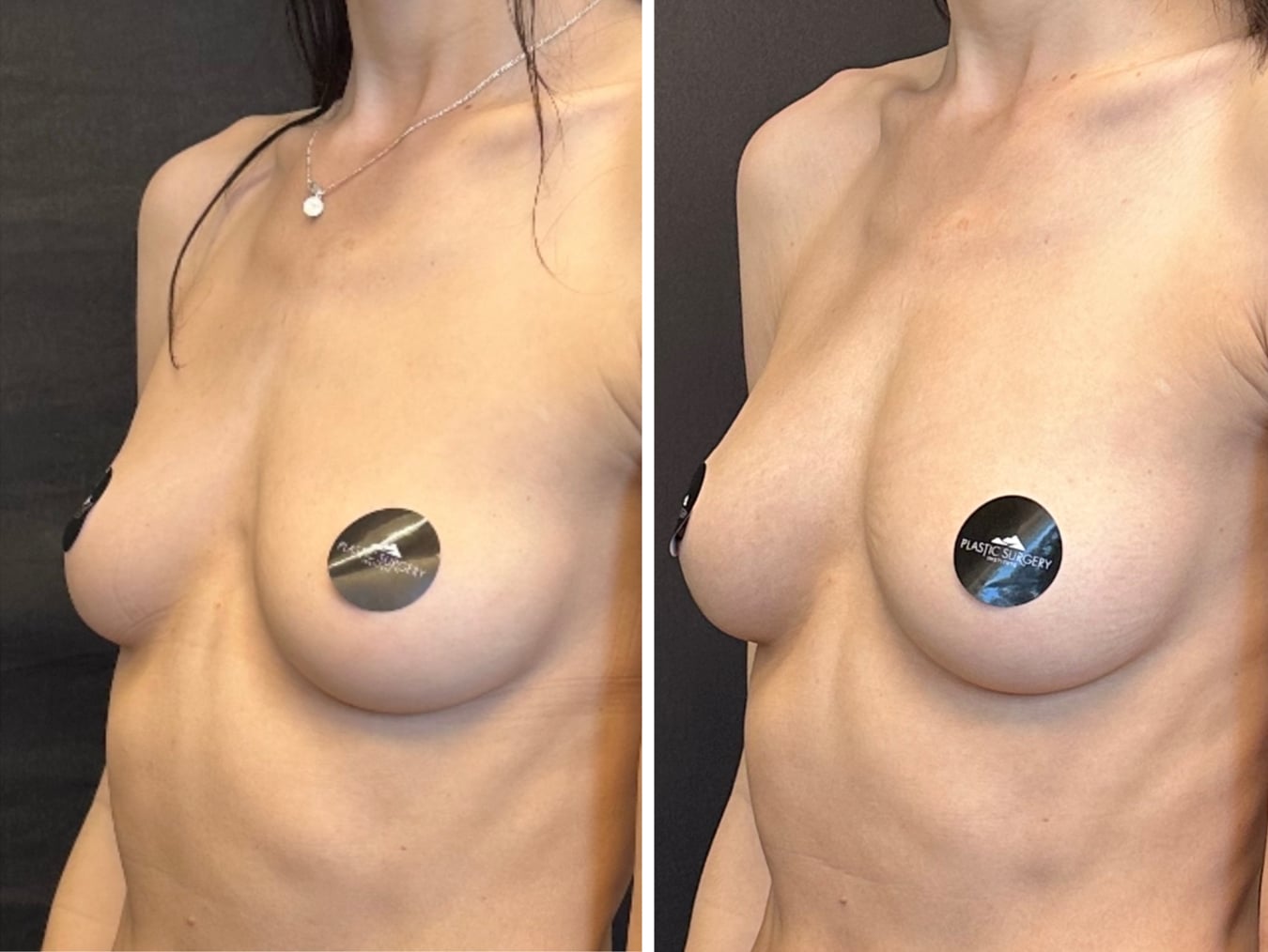
Is the Fat Vampire the Future of Natural Breast Augmentation?
I know plastic surgery is not for everyone and I debated whether or not to undergo the fat vampire. This was my first time under anesthesia for a cosmetic procedure and by far the most extensive surgery I have ever had. But it ultimately felt like the most efficient way to address my concerns, and I am even happier with the results than I expected to be. My breasts look exactly like my own, just fuller; I keep saying that I feel seventeen again — or at least my boobs do.
While fat transfer is already the foremost alternative to breast implants, I think the fat vampire with its added PRP was the perfect choice for me. Oculoplastic surgeon Kami Parsa, MD, who regularly performs fat transfers, says that PRP combined with fat is ideal for extra thin patients with volume loss because of its more robust results. While I will never have to undergo surgery again, I could absolutely see myself getting PRP added to my breasts in the future, like with a vampire breast lift. Dr. Karam also points out that the fat tissue added "is robust in stem cells so there is a regenerative effect that comes with fat transfer" over the long term. This basically means that I was able to give my breasts the most natural boost available.
Whether or not we are entering a post-implant world is debatable. Even Dr. Chopra, a BII expert, points out that so long as there is informed consent regarding the risks of breast implants, he supports them. But he also reveals that explant surgeries — the removal of implants — had one of the highest increases in procedures last year. "At our practice it's about a 70/30 split," says Dr. Chopra of their patients seeking the fat vampire. "Roughly 30 percent simply want a natural alternative to implants, and 70 percent are seeking explant and breast reconstruction due to complications from Breast Implant Illness."
